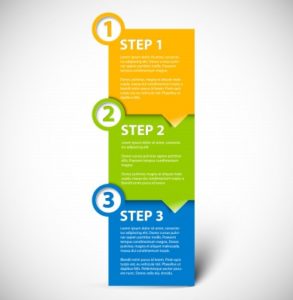 In this issue of “Raising the Bar”, Debra L. Bruce continues with the final part of her series which addresses how law office systems work to provide improved efficiency, increased quality control, and cost reductions. Part 1 focused on “Why Systems Matter”, Part 2 introduced “How to Employ Systems”, and this final part continues with some additional steps to “Employ the Systems”. If you missed Parts 1 or 2, follow the links on our blog to read them.
In this issue of “Raising the Bar”, Debra L. Bruce continues with the final part of her series which addresses how law office systems work to provide improved efficiency, increased quality control, and cost reductions. Part 1 focused on “Why Systems Matter”, Part 2 introduced “How to Employ Systems”, and this final part continues with some additional steps to “Employ the Systems”. If you missed Parts 1 or 2, follow the links on our blog to read them.
1. Stop recreating redundant letters and emails. All lawyers have forms as starting points for longer documents like interrogatories or purchase and sale agreements. Many continue to prepare common emails and letters from scratch, however. Even if they will need some customization, design forms for frequent letters and emails. Begin with one you have already written, or the next time you write one, save an extra copy of it in your forms folder. You’ll be able to whip out future emails more quickly, or let your assistant do the first draft for you to edit. Email forms can be saved in the drafts folder in Outlook (or another email program) for a quick copy and paste into a new email.
2. Checklists help prevent malpractice. Reviewing a checklist will remind you and your staff about pesky little details like sending out a notice or ordering certified copies in time for a closing. A thorough checklist can also help you budget the proper amount of time for the matter. Create a checklist for each type of matter that you handle repeatedly. Again, this can be accomplished on an as you go basis for future use. A closing document index can function as a checklist for transactional matters. Your pre-fab checklist will help you be more efficient, stay on track and avoid slip-ups. You can also have more confidence that your assistants have handled their assigned responsibilities when the matter file contains a checklist with their initials beside the completed items.
3. Use client questionnaires. Have a general information sheet for contact information, invoicing instructions, conflicts checks and other administrative data. Ideally, a new or prospective client would complete it in advance of the appointment to help with conflict checks and file setup. Alternatively, your assistant can take down the information when they arrive. For each type of matter you handle, design a different questionnaire for the more substantive questions. Some lawyers have the client complete the questionnaires in advance, while others choose to use the substantive questionnaire as a reminder of important data to gather during the client interview. Either way, it will reduce the number of times you have to contact the client for additional information.
4. Prepare instruction sheets and FAQs for new clients. Unless your clients are sophisticated users of legal services, often they are nervous, distracted or upset when they meet their lawyer for the first time. They may have difficulty remembering all that you tell them. To make it easier on them and to avoid having to repeat yourself, develop written materials that answer common questions and let the client know what to expect in connection with their legal matter. Transmitting copies to the client has the added bonus of documenting that you informed the client of all the information and caveats that you intended to provide.
Whether you work in a big firm where many administrative duties are handled for you behind the scenes, or you’re a solo practitioner managing everything, practice systems can improve your productivity and reduce your stress.
Post adapted with permission from an article by Debra L. Bruce in the August 15, 2012 issue of The Legal Intelligencer. (c) 2012 ALM Media Properties LLC. Further duplication without permission is prohibited.
